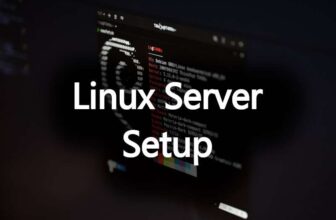
As freelance developers, the freedom to choose projects and work hours comes with the challenge of managing overhead costs effectively. Cloud hosting, while essential, can be a significant expense. This article explores how to navigate the complex landscape of cloud hosting, select the right providers, optimize usage, and manage costs without compromising on performance.
1. Understanding the Landscape: Why Freelancers Struggle with Cloud Costs
Many freelance developers start projects with enthusiasm, only to find that their cloud hosting bills are consuming a large portion of their budget. This is often due to a lack of understanding of cloud pricing models, which can be complex and opaque. For instance, costs can fluctuate based on data transfer volumes, storage needs, and the computing power utilized. Without a clear strategy, freelancers can end up paying for more resources than they actually use.
To mitigate this, it’s crucial to understand the specifics of each cloud service’s pricing structure. For example, some providers charge differently based on the time of day or the geographic location of the data centers used. By aligning your usage patterns with these pricing models, you can significantly reduce costs.
Additionally, many freelancers are not aware of the discounts and free tiers available. Providers like AWS, Google Cloud, and Azure offer free tiers and discounted rates for continuous usage or pre-commitments. Understanding these options can lead to substantial savings without compromising on the necessary services for your projects.
2. Selecting the Right Cloud Hosting Provider: Criteria and Configurations

Choosing the right cloud hosting provider is more than just comparing prices. It involves understanding your specific needs and matching them with what providers offer. Start by assessing your project requirements—consider the computing resources, storage needs, and specific services like managed databases or machine learning capabilities.
Once you have a clear idea of your needs, compare the offerings of different providers. Look at not only their costs but also their reliability, scalability, customer support, and compliance with standards relevant to your project. For instance, if you handle sensitive data, ensure the provider complies with regulations like GDPR or HIPAA.
For freelance developers, flexibility is key. Providers like Kamatera offer highly customizable VPS solutions, which allow you to choose specific configurations for processors, memory, and storage that suit your project without paying for unnecessary extras. Try Kamatera.
3. Optimization Strategies: Enhancing Performance While Reducing Expenses
Optimization of cloud resources is a continuous process. Start by monitoring the performance and usage statistics to identify underutilized resources. Many developers make the mistake of over-provisioning resources to avoid downtime. Instead, use auto-scaling features which allow your system to adapt to changing loads by automatically adjusting the resources.
Another strategy is to implement caching and content delivery networks (CDNs). These can significantly reduce the load on your servers by caching static resources closer to the user, thus improving response times and reducing data transfer costs.
Lastly, consider using spot instances or reserved instances if your workload is predictable. These options can offer significant savings compared to standard on-demand instances. For example, AWS offers Reserved Instances which can save you up to 75% over standard prices if you commit to a certain usage level.
4. Recommended Tools for Cost Management and Performance Monitoring
Effective management and monitoring tools are crucial for maintaining an efficient and cost-effective cloud environment. Tools like CloudHealth by VMware provide comprehensive cost management solutions that help you visualize, optimize, and automate your cloud costs and usage. They offer reports and recommendations that can help you make informed decisions about resource allocation and cost-saving.
For performance monitoring, consider tools like Datadog or New Relic. These platforms not only monitor the health of your applications but also provide insights into how to improve performance and reduce costs. They can track everything from CPU and memory usage to more complex application performance metrics.
Additionally, automation tools like Terraform can help in setting up and managing infrastructure as code, which simplifies the deployment of environments and ensures consistent configurations that can be scaled or replicated easily, reducing manual overhead and errors.
Bonus Tips for Advanced Cost-Optimization
- Use Heatmaps for Usage Patterns: Tools that provide heatmaps of server and resource usage can help you identify peak times and optimize schedules for batch jobs or backups during off-peak hours to save costs.
- Leverage Serverless Architectures: For suitable applications, consider using serverless computing models where you only pay for the execution time your code is running, not for idle server space.
- Automate Policy Enforcement: Use policy-as-code tools to automatically enforce cost-saving measures, like shutting down idle instances or deleting unused volumes.
By understanding and implementing these strategies and tools, freelance developers can effectively manage their cloud hosting needs in 2025, ensuring that they can focus more on creating great applications and less on managing infrastructure costs.





